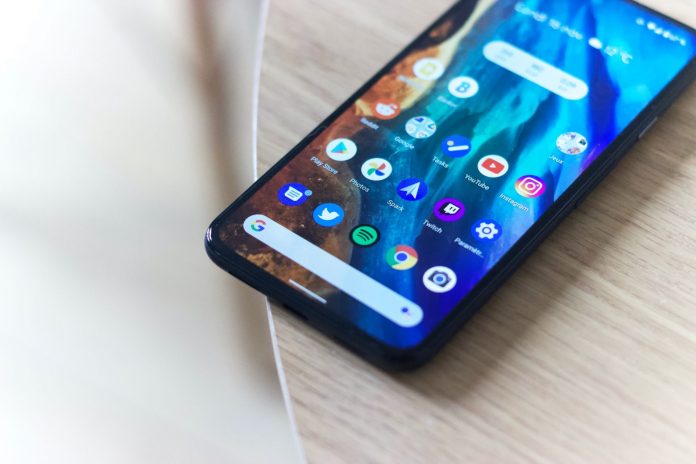Anyone who owns a smart device today knows the sheer frustration associated with a poor internet connection and a slow-performing device. Perhaps you’re attempting to download files or videos or surf the web, or you’re working remotely and desperately need a solid connection to meet your deadline. The answer to a faster internet connection may be within your reach, and it could be as simple as switching WiFi frequencies in your phone settings, which merely requires a few steps.
Contents
What to Know About WiFi Frequencies
WiFi frequency bands are measured in gigahertz (GHz), a frequency unit totaling one billion hertz. Typically, GHz measures things like computer processing speed, electromagnetic frequencies, and alternating currents. However, WiFi routers are a unit of measurement for the WiFi’s frequency bands, which operate on 2.4GHz and 5GHz. Regarding WiFi speeds, the higher the GHz, the faster the speed. However, there are some contingencies you should note.
While a higher frequency, like 5GHz, can produce higher speeds, a WiFi router’s wireless range can only handle limited interference. Your wireless range may decrease if too many walls, doors, or floors separate you from your router. On the other hand, 2.4GHz covers more range, albeit with slower speeds. If you’re in a smaller space with less object interference and need faster speeds, 5GHz should be the obvious option.
How to Determine If Your WiFi is on 2.4GHz or 5GHz
Determining your WiFi GHz is a straightforward process with Android phones. Navigate to your phone settings, select ‘Network & Internet,’ and then ‘WiFi.’ Here is where your phone will display what network you’re connected to. If the 5GHz doesn’t display, your phone is probably connected to a 2.4GHz network. It’s important to note that connecting to 5GHz may not be possible for some Android devices.
The compatibility issue comes into play with Android phones and a 5GHz WiFi frequency, as your current version may not support a 5GHz network. This can be especially true with older Android phone models. In such cases, you may have to stick with a 2.4GHz frequency and consider upgrading your phone.
Steps to Changing WiFi Frequency on Your Android Phone
Like checking what frequency is available, changing your WiFI setting from 2.4GHz to 5GHz is straightforward and can be done right from your device. The steps are as follows:
- Navigate to your settings app on your device and scroll to “Connections.”
- Select “WiFi.”
- The menu will display a three-dot icon. Select the dots.
- Select “Advanced” from the dropdown menu
- Select “WiFi frequency band” from there and pick 5GHz.
If, for some reason, you’re experiencing issues when trying to connect your phone to 5GHz, there are a few things you can do to troubleshoot:
- Double-check that your password was entered correctly.
- Ensure your phone is compatible with 5GHz.
- Check your router and see if 5GHz is enabled.
- Try restarting your device and router.
- Try using another device to connect.
Turning Off 5GHz WiFi On Your Android
Whether your device has connected to 5GHz WiFi without your knowledge or you’re looking to conserve power, turning off 5GHz is an equally straightforward process to turning it on. The steps are as follows:
- Navigate to settings on your phone and scroll to the WiFi settings menu.
- Tap on the “Advanced” option.
- This will display the WiFi frequency band.
- Select 2.4GHz
Tips for Optimizing Your WiFi Connection with Your Phone on 5GHz
As mentioned before, while 5GHz has faster speeds, this can be affected by interference, whether it is due to objects or proximity to your device. Other factors, like device bandwidth, play a role in a slow internet connection. Fortunately, there are some actions you can take to maximize your 5GHz connection and maintain better internet speed:
1. Strategically Position Your Router
Placing your router in a centralized location, elevating it, or reducing the number of objectives between you and your router can help strengthen its signal. Avoid placing it near larger objects, and try putting it on a shelf or table instead.
2. Restart Your Router Regularly
Restarting your router is one of the most common and helpful troubleshooting tips. Doing so regularly helps reset the connection, as it frees your device of bugs and helps with overall speed.
3. Minimize Interference
Interference can occur due to your WiFi router being too far away or other devices like microwaves, wireless speakers, garage door openers, and baby monitors being within range. Too many devices in the way can cause congestion, leading to slow performance.
4. Limit Connected Devices
If you have multiple devices or multiple people in your home with devices, chances are they’re all connected to WiFi. You should check to see if any additional devices have been added, especially if they are unauthorized, as this can pose a security risk.
5. Try a Range Extender
A single router may not be able to cover as much range if your home or office is a large space. For this reason, many opt for a range extender, which helps boost the signal and cover more area.
6. Leverage QoS Settings
Different routers allow you to adjust their settings to prioritize specific devices, known as QoS (Quality of Service) settings. So if your phone is lagging, but your Smart TV is working perfectly fine, consider using this to ensure your preferred device gets more bandwidth.
7. Add More Bands
Routers offer dual-bands or tri-bands, meaning you can help optimize usage and reduce congestion from other devices. Dual bands help to choose the best frequency to use, while tri-bands add another band to help accommodate additional devices without slowing down speeds.
Final Thoughts
In a world that runs on mobile technology, slow WiFi speed when using your Android device is the last thing you want to deal with. Fortunately, modern technology has afforded us ways to overcome laggy connections and optimize performance. When switching to 5GHz, you’ll experience faster speeds and a stable connection, helping you to get back up and running in only a few steps.







